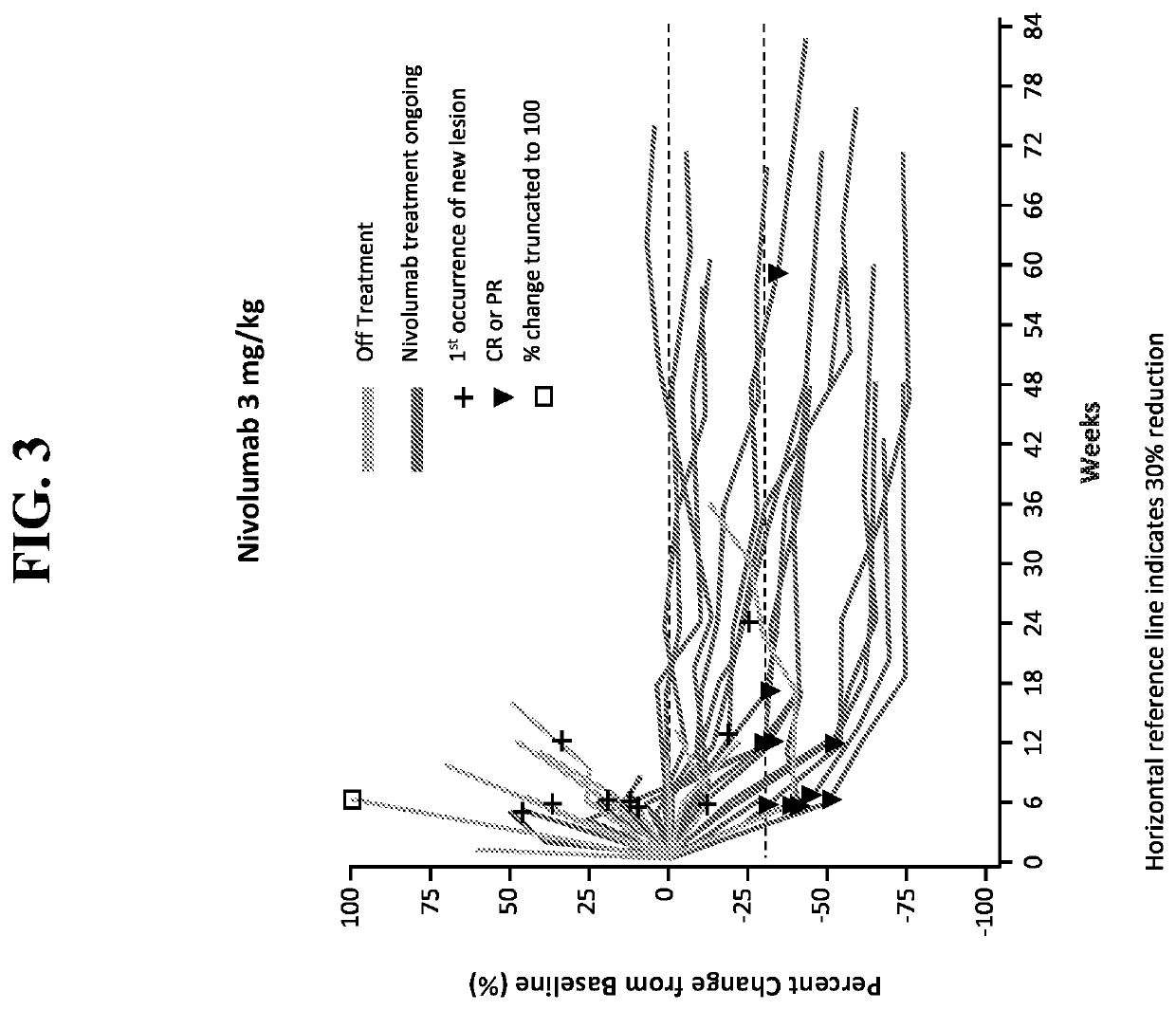Methods of treating colorectal cancer
a colorectal cancer and colorectal cancer technology, applied in the field of colorectal cancer treatment methods, can solve the problems of high mutational burden of dmmr-msi-h crc, and inability to accept all therapies, etc., and achieve the effect of high degree of microsatellite instability
- Summary
- Abstract
- Description
- Claims
- Application Information
AI Technical Summary
Benefits of technology
Problems solved by technology
Method used
Image
Examples
example 1
Clinical Case Study of Nivolumab±Ipilimumab in the Treatment of Patients with Metastatic Colorectal Cancer with and without High Microsatellite Instability
[0177]Patients were eligible for inclusion in this study based upon the following criteria: 1) histologically confirmed colorectal cancer; 2) recurrent or metastatic disease measurable by Response Evaluation Criteria in Solid Tumors (RECIST) 1.1; 3) patient is an adult at least 18 years of age with Eastern Cooperative Oncology Group (ECOG) scores of 0-1; and 4) disease progression after ≥1 prior therapy regimen (for microsatellite instability-high patients) or after the latest treatment (for all patients) or intolerance or refusal to take chemotherapy. Patients were excluded from the study based upon the following criteria: 1) central nervous system involvement; 2) history of malignancy within 3 years; 3) active or history of autoimmune disease; 4) need for treatment with immunosuppressive medications including corticosteroids; or...
example 2
Extended Clinical Case Study of Nivolumab+Ipilimumab in the Treatment of Patients with Deficient DNA Mismatch Repair / High Microsatellite Instability Metastatic Colorectal Cancer
[0203]Further to the clinical case study described in Example 1, the efficacy and safety of nivolumab in combination with ipilimumab was investigated in an expanded population of patients with DNA mismatch repair-deficient / microsatellite instability-high (dMMR / MSI-H) metastatic colorectal cancer (mCRC) who had received a first treatment dose at least six months prior to the data cut-off. Patients were eligible for inclusion in this study based upon the following criteria: 1) histologically confirmed metastatic / recurrent colorectal cancer; 2) dMMR / MSI-H indicated by local laboratory; and 3) at least one prior line of therapy.
[0204]FIG. 8 shows the overall study design for patients included in a monotherapy arm or combination therapy arm of treatment. Briefly, patients included in the monotherapy arm were admin...
PUM
| Property | Measurement | Unit |
|---|---|---|
| body weight | aaaaa | aaaaa |
| body weight | aaaaa | aaaaa |
| median time | aaaaa | aaaaa |
Abstract
Description
Claims
Application Information
 Login to View More
Login to View More - R&D
- Intellectual Property
- Life Sciences
- Materials
- Tech Scout
- Unparalleled Data Quality
- Higher Quality Content
- 60% Fewer Hallucinations
Browse by: Latest US Patents, China's latest patents, Technical Efficacy Thesaurus, Application Domain, Technology Topic, Popular Technical Reports.
© 2025 PatSnap. All rights reserved.Legal|Privacy policy|Modern Slavery Act Transparency Statement|Sitemap|About US| Contact US: help@patsnap.com



